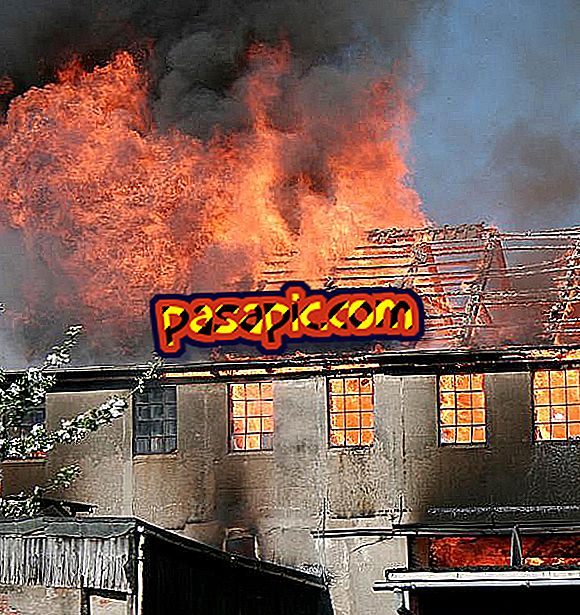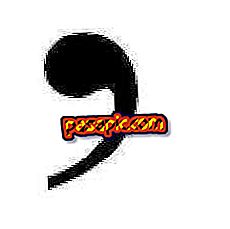How to calm a dog that is afraid - the best advice

Treating fear in dogs can be a complicated task, and even in many cases it may never be solved, but surely the problem can be mitigated. One of the first things that must be done when detecting that our furry is afraid or phobia to something or to some situation is to speak it with the veterinarian. In addition, especially if it is a complicated case, we should put ourselves in the hands of experts, such as canine ethologists.
If you are interested to know what else you can do when your faithful companion suffers anxiety and fear for something and, thus, be able to help you, keep reading this article where we give you advice on how to calm a dog that is afraid .
Main causes of fear in dogs
There are several reasons why a dog may have fears, traumas and phobias, because it happens as in people and is something that depends both on internal factors and factors external to the individual. Among the main reasons why a dog is afraid we find the following:
- Problems in socialization: if when the animal was the first months of life, when socialization occurs and learns how to relate to the environment, there are negative situations can associate the situation, objects, person or animal with a negative result and produce the association of fear to a certain stimulus. This process takes place from 3 weeks to 3 months of age, but it does not mean that later they can not continue learning, but that in this phase is when you learn the most, the process is easier and the connection or association is stronger. it is created.
- Trauma: can happen in socialization or outside of it. These are negative experiences that create traumas in the animal, such as mistreatment or an accident in which, due to an object, person or animal, the dog suffers harm or discomfort, relating this and resulting in the fact that, every time he sees the causer, remember the damage and react with fear, insecurity or even aggressiveness.
- Genetics: fear and insecurity to certain stimuli are traits that dogs can inherit, as well as being distrustful in general. Therefore, a tendency to this facilitates that when faced with a stimulus that can scare the animal, it reacts with enough fear.

How to calm a dog that is afraid of loud noises
When a dog is frightened by loud noises like traffic, a slamming door, thunder or fireworks, among other things, he enters a state of fear and nervousness which prevents him from doing what he was doing, as example walk with you or eat, and it creates the need to protect, hide and run away . You will see that he gets nervous, barks, cries, moans, gets stuck and does not want to continue walking towards the direction where the loud sound comes from and wants to walk towards the opposite side, hides behind you or even tries to take it if you have done so accustomed or will hide in any corner from which you get much less noise.
To calm a dog with fear of firecrackers, rockets or fireworks follow these tips:
- The first thing is vital to think that you have to act calmly, you never have to leave it alone or you have to shout at him or scold him because we would only make the situation worse.
- Take it from the area where you hear so much noise or isolate windows and doors to the maximum if you are at home.
- Stay close to him and talk to him in a normal, relaxed and positive tone, and if he has hidden, then let him feel more protected there since he will relax more easily, he thinks he will leave when he feels better.
- If you can already foresee that there will be a noise situation that will put your hairy state, such as a party, firecrackers or a game of some sport, you can build a nest to protect yourself before the problem starts in a place to be possible already isolated, as a room that is centered in the building or its carrier, and using your bed, clothes of yours and leaving food that you like, for example prizes or treats for dogs. Offer to enter there when it starts to feel uncomfortable or even before, but never force it in.
- You can also try to distract your hairy, making him focus on something other than the noise that scares him. For example, distract him with his favorite toys, encouraging him to play or offering him some food that he likes, taking him away from the area that scares him.
- If you already know that it will happen every time there is a storm, pyrotechnics or other noise situations even if you are locked up at home, try to use synthetic pheromones, which serve to calm dogs with fear, high levels of anxiety and other related problems. . They are usually sold in diffusers that are plugged in and you can buy them at your trusted veterinary clinic.
Discover in this other article of How to calm the fear of firecrackers in a dog more specifically for this problem.
How to calm a dog with fear of animals, people or objects
However, if the fear your dog has manifests when he sees, smells or hears certain animals or people, you will have to follow these other tips:
- Remove the stimulus or your hairy if you agree to walk to end the problem at the moment or, at least, you will notice that it begins to calm down.
- Distract him with positive things, invite him to keep walking or running or playing, offer him his toys, et cetera.
- Calm it with a soft tone of voice and do not shout at it.
- Work the relationship between your dog and that person or animal so that it ends up happening and always do it in a positive way.
- Ask a canine behavior professional for guidance on how to do better in your case and, thus, not make mistakes that make the fear worse.
More tips to calm a dog that is afraid
In fact, there are mistakes that it is easy to compete if we act without the help of a professional and that should be known, since there are things we should never do to calm a dog with fear, phobia, trauma or anxiety:
Separate two dogs that fight
It is very important that we do not try to separate two dogs in any way in this situation, whether it is a dog fight for reasons such as marking, as if it is that one of the two is afraid and has reacted against the dog I had closer.
If you do it wrong you can take a good bite. Simply, take your dog by the hind legs, lifting them slightly so that he starts walking backwards, not biting and retreating. Keep it that way, or hold it as long as you can, until it calms down. The best thing is that the owner of the other can also do it with his, but if you can only do one you have to do it to the one who is currently dominating and biting more. Never put your hand in front of them, or take the necklace, because the neck is where they always try to bite the other, do not shout or attack.
Do not force him out of hiding
When a dog hides out of fear it is because it feels a bit safer. While you are in this state and do not calm down do not force him out of hiding as it will worsen the situation and may have a bad reaction to you or even suffer an anxiety or panic attack.
Do not punish him for wetting himself with fear
A natural reaction of the body to feel a lot of fear, panic or phobia can be urinating due to stress and terror that can be felt and do it without even realizing it, it is involuntary. Therefore, it is a time when there is no sense or positive effect that the dog is quarreled if this happens.
Do not shut him up if he cries or barks
When a furry barks or cries you have to find out the reason why it does so and how to express it and if we send you to silence without knowing why we will only repress and ignore the problem can cause much stress and more fear. Therefore, if a dog is afraid let it be expressed vocally, either with whimpering or barking and, simply, remove the stimulus that causes this or get distracted with something.
Do not force the dog to walk if he does not want
If your dog does not want to walk in one direction, it stays stuck in the ground and pulls the strap in counter direction, do not force him to follow that path he does not want to go. If you are afraid it is better that you go where you want to not make the situation worse or, at least, you deviate enough so that he decides to continue walking around what he fears.



